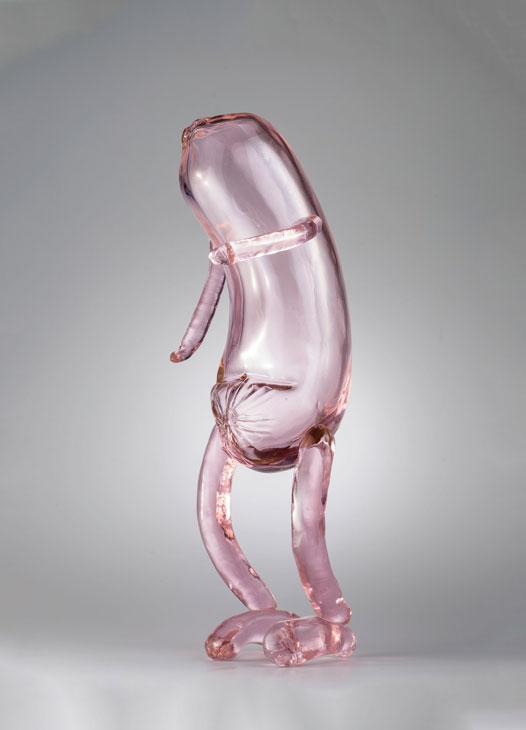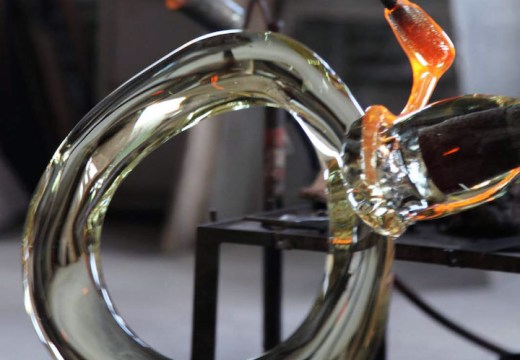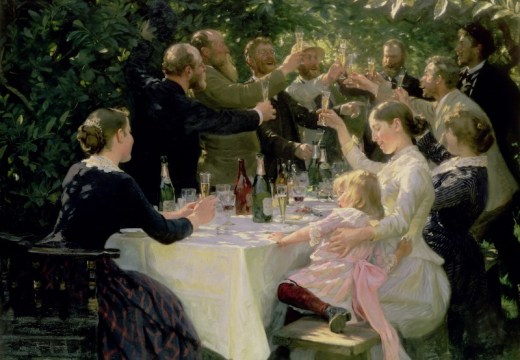Adriano Berengo has made it his mission to re-energise the glass industry in Murano, home to innovative glassmaking for centuries. He talks to Apollo about his ‘Glasstress’ project and its efforts to propel Murano glass into the 21st century
What motivated you to launch ‘Glasstress’ in 2009?
I don’t come from the glass world. When I first came to Murano, I looked around and asked myself, ‘What can you do that would be important for glassmaking and draw it away from just being decorative or functional?’ I started to work with glass in 1989, firstly with local and then nationally recognised artists; the launch of ‘Glasstress’ in 2009 was a really important jump into the contemporary art world. That year, for the first show at Palazzo Franchetti, we invited around 40 artists, including Tony Cragg and Mona Hatoum, to present an idea to be interpreted in glass – but we also had older works by Jean Arp, Louise Bourgeois, Lucio Fontana, and others. To see all these artists using glass as a material was a bit of a shock to the art world.
So there had been a precedent with the work of those modern artists?
I realised that in the 1950s and ’60s, Peggy Guggenheim had a vision for Murano glass, saying that glass was far too important a material to be left only in the hands of the glass masters and shopkeepers of Venice. Systematically, she brought artists in her entourage – such as Ernst, Chagall, Cocteau, Le Corbusier – to Murano, to give them contact with this magical material. She realised that glass was absolutely undervalued for the purpose of art.
You went a step further than Peggy Guggenheim, by building up a furnace…
Yes, the Berengo Studio. People often ask me, ‘Who are you, what do you do?’ I’m not a glass master, I’m not an artist. I like to say that I am a kind of mediator of conflict between the artist and the glass master, but now with the knowledge of the technique. When an artist comes, I can – like a printer in the past – direct the fabrication in a certain direction, knowing that the final result will be this and not that.
How do you select the artists to take part in Glasstress?
At the beginning I selected the artists, but in a way they now select me! ‘Glasstress’ exhibitions have spread all over the world, and glass is becoming a trendy material for art. After the huge wave of conceptualism, now artists are more concerned about using their hands, or about working in close contact with craftsmen.
The curators invite artists to take part, and I also give my opinion on their projects – and whether they’re feasible or not. It’s a very difficult process to make glass, and many artists know practically nothing about the material and how it functions. Some leading artists are very afraid to come up with a result which is poor, and could damage their image as an artist.

Venetian Sausage Small (2016), Erwin Wurm. Courtesy Fondazione Berengo
What challenges do contemporary artists most commonly discover when they come to work on Murano?
Normally they come with an idea, and we end up with another one. That’s because making glass is not like translating one art form into another. You have to use glass for what it is, and the properties it has – the transparency and fragility, you can communicate a lot of things through these.
Another thing is that many artists want absolute precision, which cannot be achieved with Murano glass. You always need the mediation of a man, the glass master, whose hands can shape something. There is another technique, which is ‘lost-wax’ casting, used by Lalique and in the Czech glass tradition. It’s not really historically linked to Venice, because it was dismissed in the past as too long a process. I’ve reopened that chapter: without the casting process, I wouldn’t be able to make the work which I’m making this year for Erwin Wurm, for example. We recently made a fantastic sculpture with Jaume Plensa; the piece turned out to weigh 260 kilograms, and took four weeks to cool down. The Murano furnaces have traditionally been more business-oriented than that!
How do the maestri respond to the artists’ proposals?
If they’re not excited after one month working at the furnace, they get scared and go away. It’s one thing to make a series of drinking glasses, and then repeat them for weeks and weeks, but another thing for artists to bring you new ideas ever day. The maestri have to be flexible, to be able to read a drawing – to read an idea – and then adapt it to their know-how.
Bringing artists from abroad is also a way to regenerate Murano. Artists always give you more than you give them. Every artist brings new ideas, new challenges, and by following those sometimes impossible dreams, you learn to modify your technique too.
Does Venice do enough to preserve the glassmaking tradition and exhibit its history?
No, absolutely not. There is no support from the city and its institutions. And most of the businesses are not so interested in the contemporary aspect of glassmaking: they try to sell the past more than the present. To allow Murano glass to die is like allowing the Colosseum to collapse. Murano is the genius loci of Venice – it’s the spirit of the city, and the glass tradition here is more than 1,050 years old. The Stanze del Vetro is doing a fantastic job – it has mainly featured the history of Venini and its artists so far, but I think they are probably coming closer to contemporary art now.
How do you see your personal role in protecting Murano glassmaking?
I need to continue to do what I’m doing. I’m not supported by anybody, and I think the Fondazione Berengo is already important for the city. I’d like my model to be copied by others, because there is no possibility for big manufacturers in Murano. All the old furnaces are turning into studios where the maestro is slowly becoming an artist himself, trying to copy the example of American studio glass. I think that if more people could do what I’m doing, there would be a kind of new renaissance in the Venetian glass business.

Adriano Berengo standing in front of a glass furnace at the Berengo Studio, Murano, Venice, 2011. Photo: Hugo Thomassen; courtesy Fondazione Berengo
‘Glasstress 2017’ is at the Palazzo Franchetti, Venice, from 11 May to 26 November.
From the May 2017 issue of Apollo. Preview and subscribe here.
Unlimited access from just $16 every 3 months
Subscribe to get unlimited and exclusive access to the top art stories, interviews and exhibition reviews.














![Masterpiece [Re]discovery 2022. Photo: Ben Fisher Photography, courtesy of Masterpiece London](http://www.apollo-magazine.com/wp-content/uploads/2022/07/MPL2022_4263.jpg)
It’s time for the government of London to return to its rightful home